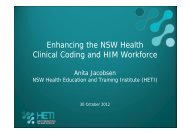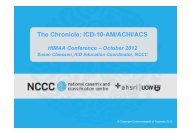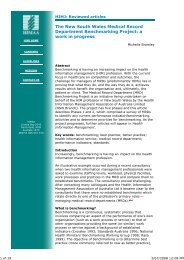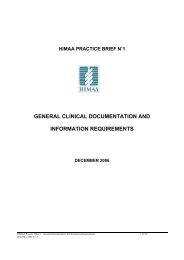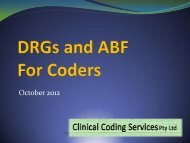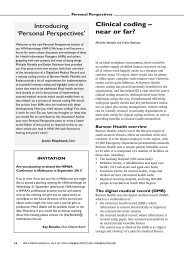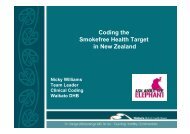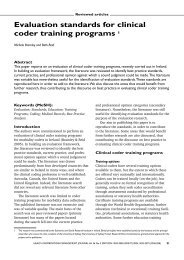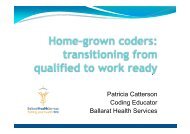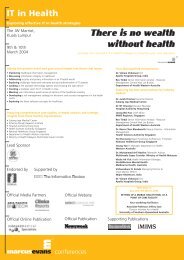Health Information Management Journal Guidelines for authors
Health Information Management Journal Guidelines for authors
Health Information Management Journal Guidelines for authors
Create successful ePaper yourself
Turn your PDF publications into a flip-book with our unique Google optimized e-Paper software.
TextThe Editorial Board of <strong>Health</strong> <strong>In<strong>for</strong>mation</strong> <strong>Management</strong> <strong>Journal</strong> suggests theusual academic model of abstract, introduction, method, results, discussion andconclusion <strong>for</strong> most original articles. Substantial non-reviewed articles may alsofollow this model, or variations of it.• Abstract. Abstracts should be approximately 100 words in length, andsummarise the purpose, method, results, summary of key findings andconclusions of the paper.• Introduction. This should state the purpose of the paper. Normally,introductions include a short, relevant literature review, including pertinentbackground in<strong>for</strong>mation.• Method. includes selection of subjects (population and sample sizes, <strong>for</strong>example), mode of observation, apparatus and statistical procedures. Theaim of the method section is to provide enough in<strong>for</strong>mation to allowreplication of the procedures used in the original research. Reasons <strong>for</strong>selection of methods should also be included in this section.• Results should be presented logically, and can include text, tables,figures or other graphics. Do not duplicate data presented in tables withinthe text.• Discussion. Major, new and significant observations and findings shouldbe highlighted and discussed. The significance of results compared withsimilar previous studies is to be included. If a hypothesis was being tested,it is necessary to report whether the hypothesis was supported or rejected.The implications and limitations of the findings, along with their practicalimplementations, should be reported here. The significance of the study’sresults should be compared and contrasted with similar, previouslypublished in<strong>for</strong>mation in this section. It may be helpful to readers toaccurately sub-head the section to make clear differentiations between the‘discussion’ and the ‘literature review’.• Conclusion. The conclusion contains a brief summary of the majorfindings of the study, but is not a reiteration of the abstract. Statementswhich cannot be supported by the in<strong>for</strong>mation are not to be presented inthe manuscript. Do not include new in<strong>for</strong>mation, nor summarise themanuscript.• Footnotes. Footnotes may be used to elaborate a point, and in somecases to cite in<strong>for</strong>mation not normally included in the references at the endof the manuscript. Footnotes may, <strong>for</strong> example, provide further technicalin<strong>for</strong>mation about computer hardware or software used in a project, which,if included in the body of the text, is confusing to the reader. It is alsouseful <strong>for</strong> adding an aside, or valid comment apart from the text.Footnotes should be numerically identified by using superscript romannumerals in the text, with links at the bottom of the page on which thefootnote indicator appears.Submitting a manuscript <strong>for</strong> reviewAuthors should ensure that they adhere to the following guidelines:



